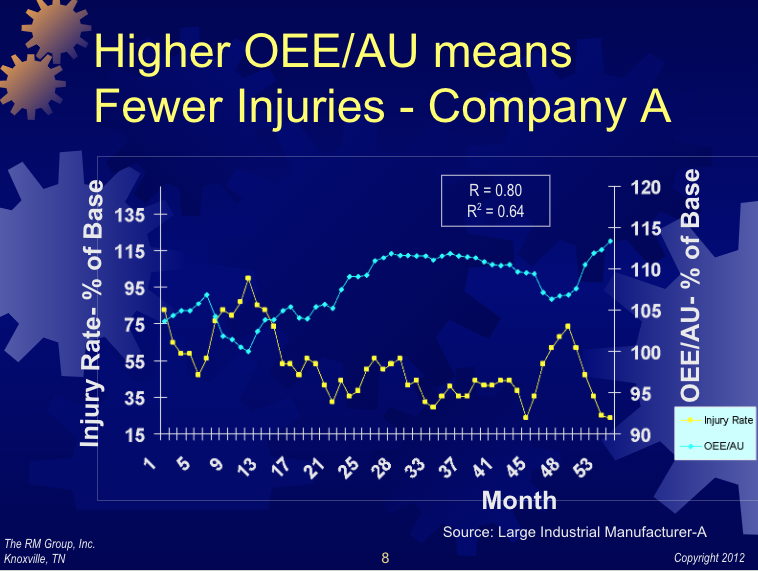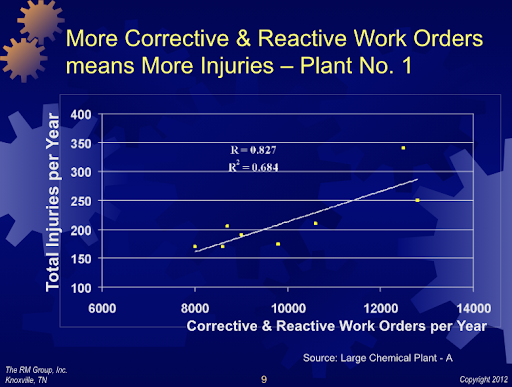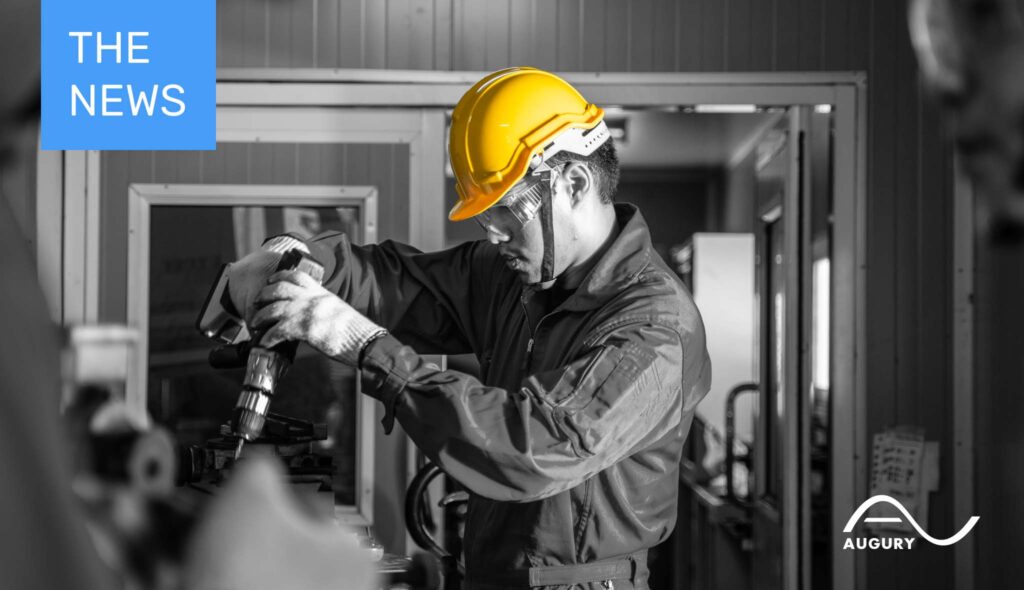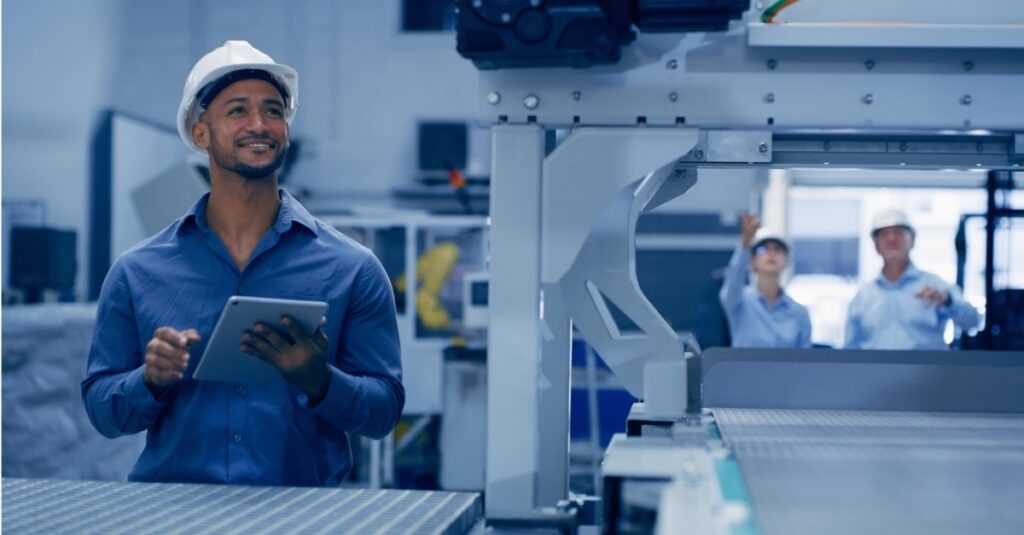
In manufacturing, safety is everyone’s responsibility. Safety incidents and workplace injuries directly impact workers, morale, productivity, company reputation, and the bottom line.
“All plants say safety is their top priority,” says Ron Moore, an internationally renowned expert on manufacturing excellence with over 45 years of experience. “It’s a nice thing to say, but often it isn’t backed up by actions.” Moore’s research shows that actions that improve reliability actually improve safety too.
Reliable Machines are Safer Machines
Every human-machine interaction can potentially cause an injury. Yet there’s still limited awareness of the link between the reliability of machines and the safety of the people that work with them. Moore has collected data that clearly demonstrates the relationship between worker safety and machine reliability. His research maps worker injury rates against Overall Equipment Effectiveness (OEE) and Asset Utilization (AU) in manufacturing facilities.

As facilities improve their OEE and AU, their worker injury rate goes down, and according to Moore, this pattern is consistent across all manufacturing industries from food and beverage to oil and gas.
Reactive Works Causes Injuries
Moore’s research also shows that plants with more reactive work orders have more injuries. When maintenance teams do unplanned repair work in response to a failure, they are under pressure from the production team to get machines back up and running as fast as possible and are more likely to take shortcuts.

A rushed repair is never as safe or effective as a repair done during a planned shutdown. As Moore points out, no task is so urgent that it cannot be done safely. Manufacturers should do everything in their power to reduce the number of human-machine interactions overall, but reactive work in particular, in order to limit the risk to their maintenance workers. What’s more, Moore’s work shows that reducing reactive maintenance increases OEE and AU while cutting maintenance costs.
The most effective way to avoid reactive work is to eliminate unplanned failures in the first place. Ideally, every repair should be scheduled and planned ahead of time-based on identified defects, and assigned to properly skilled technicians who have all of the necessary parts and tools readily available.
Prioritize Reliability to Improve Safety
Maintenance departments often bear an unfair amount of the blame for machine failures. According to data Moore’s gathered over the years, nearly ⅔ of equipment failures are not caused by maintenance practices, but by problems upstream. “Companies don’t seem to understand the whole series of things that occur before downtime happens,” he says.
Reliability should shift the focus from the immediate repair and the associated maintenance costs, to the causes of a downtime event. The full Reliability Process includes how companies design, buy, store, install, operate and maintain their equipment. Using this process model, manufacturers can identify where machine failures originate and improve machine reliability across the organization.
Some questions to ask yourself include: Did something in the system design create this problem? Was the right equipment purchased? How was the asset stored and was it installed properly? Was the asset being operated with care? Is our maintenance team trained to identify and prevent these issues?
“Corporate leaders need to treat reliability the same way as safety with systems, measurements and rewards, “ says Moore. Senior manufacturing leaders can prove their commitment to worker safety by taking reliability programs as seriously as safety programs.
Healthy Machines Keep Workers Safe
Better safety training, checklists, safety gear, and proper tool use make human-machine interactions safer, but reducing the need for your employees to interact with dangerous machines in the first place is the ultimate goal.
Machine Health uses IoT and AI to predict and prevent machine failures. It eliminates unnecessary maintenance tasks, cuts the number of human-machine interactions, shifts more of the maintenance team’s work from reactive to proactive mode, and improves OEE.
Healthy machines are safer and more reliable. As facilities improve Machine Health, they also ensure worker safety. A reliable plant truly is a safer plant.
Want to learn more? Just reach out and contact us!




